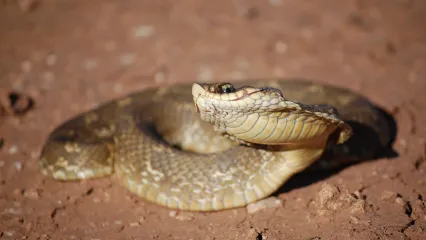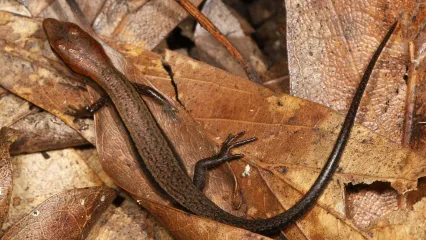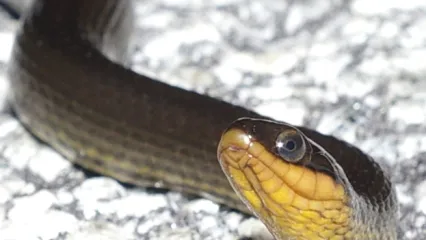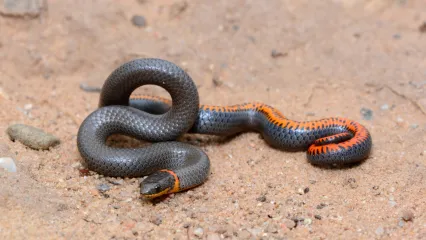
Description
Eastern hog-nosed snakes (Heterodon platirhinos) are usually colored in shades of browns and greens on top, but the colors can vary by locality. The undersides are cream or eggshell color. The eastern hog-nosed is usually more active than other types of snakes in Oklahoma. But it is generally harmless to people.
Although the eastern hog-nosed snake appears to be as threatening as many venomous snakes, it is often considered a harmless snake. When it perceives a threat, this snake will use several defense mechanisms including hissing, an alarming sound meant to warn off predators.
If hissing is not effective, it will flatten its head to resemble a cobra. As a last resort, this snake will turn belly-up as if it were dying. While playing dead, the snake opens its mouth wide. If touched or flipped over, the snake will turn belly-up again. While the hognose is playing dead, it will secrete a musk that has an unpleasant odor.
Hog-nosed snakes have rear-facing fangs and do possess an amphibian-specific venom. The snake must grab prey with its mouth and chew on it to be able to inject its mild venom.
The main prey items for the eastern hog-nosed snake are frogs and toads. These amphibians will sometimes puff up, making it harder for the snake to swallow. But the large rear-facing fangs of the hog-nosed snake will deflate the amphibians' lungs and body.
So the next time you're in the woods or fields and spot an eastern hognose, don't be alarmed.
Size
Eastern hog-nosed snakes can reach 30 inches long and appear to have thick bodies.
Habitat
Eastern hog-nosed snakes can be found in woodlands, farmlands and sandy areas across all of Oklahoma except the westernmost Panhandle counties. During colder months, they go into brumation in vacant dens of animals and unused foxholes. Brumation is similar to hibernation, but in reptiles. It is a state of dormancy that allows the cold-blooded snake to survive the winter.
Life Cycle
Female eastern hog-nosed snakes are larger than males. These snakes do not mate until they are about 2 years old. The mating season for these reptiles is spring. The female lays 15-25 eggs in logs or sandy areas.



